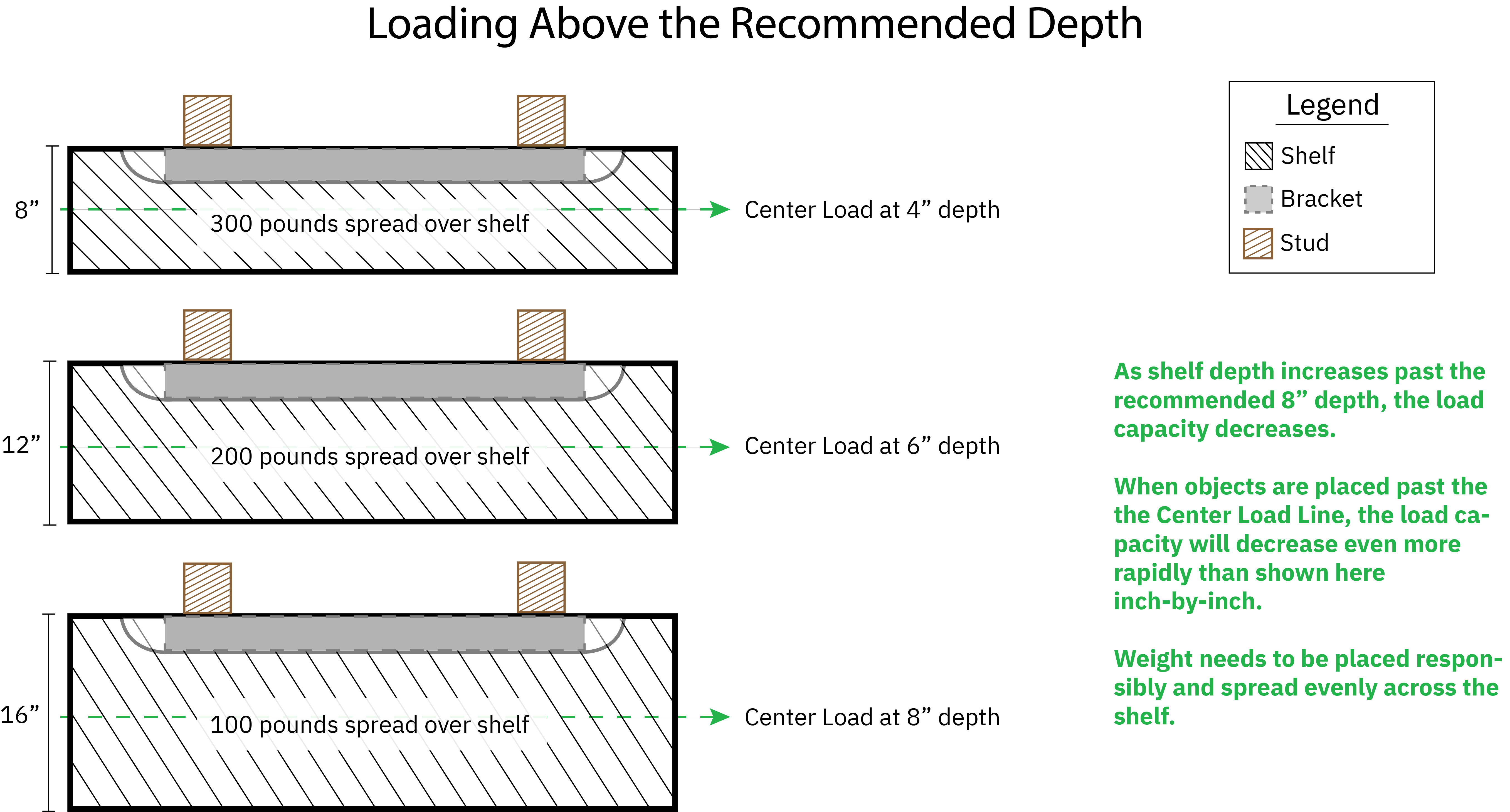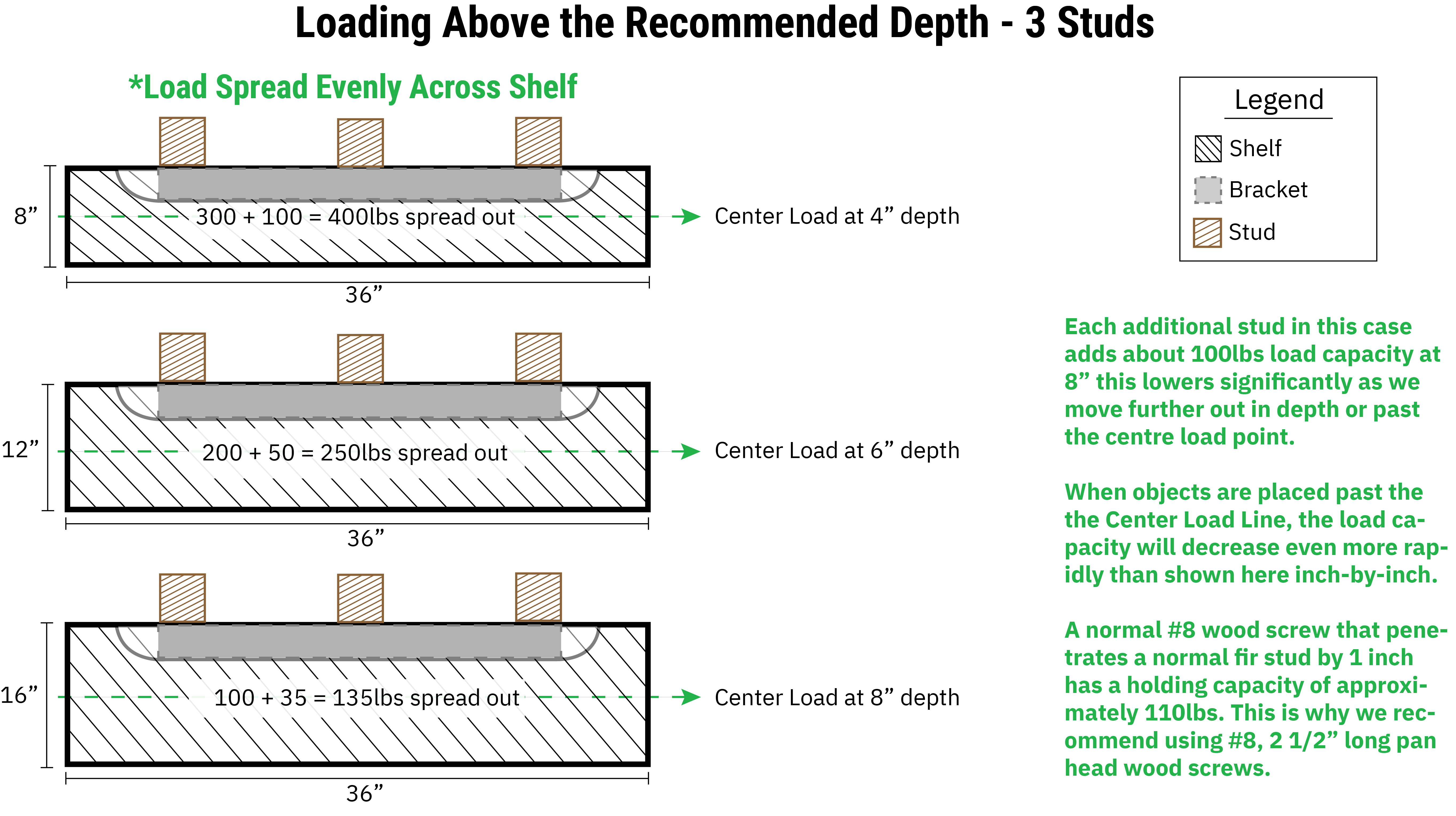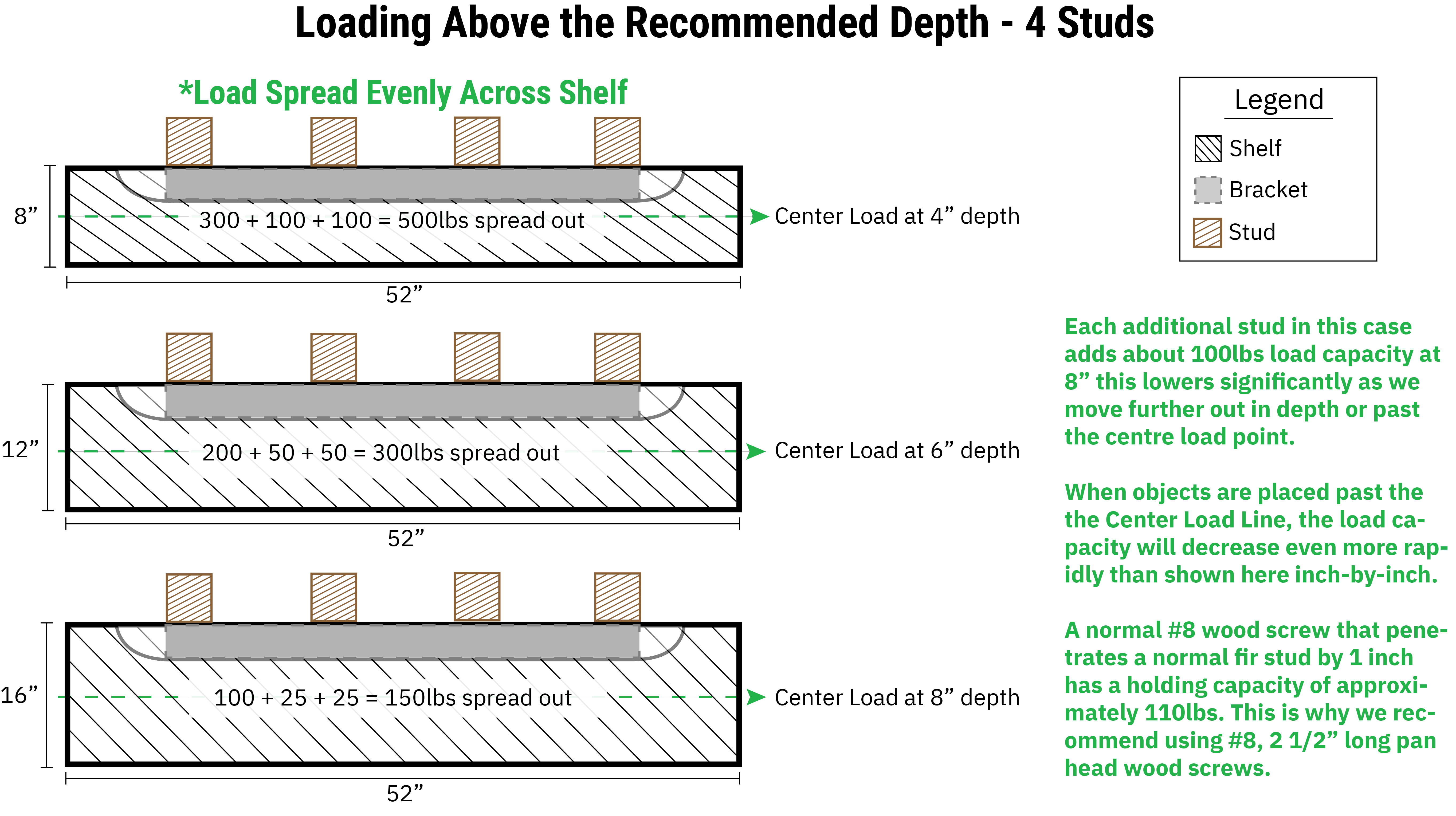People often ask us how deep you can make one of our Hovr-mounted shelves before it fails or slants (12"?, 24"?, 36"?). The good news is, the bracket will not fail. However, if too much weight is placed on the shelf past our recommended limits of 300lbs at 8", the shelf will start to slant as the screws that are in the wall attaching the male bracket will begin to slant and then eventually rip out of the wall - shelf, bracket and all! However, by using a metal epoxy glue, you can prevent or delay this occurrence to some degree. This is not however an opportunity to add MORE weight to your shelf. This temporary fix will keep the shelf straight until the epoxy breaks. At that point, there will be a sudden failure, and things will likely fall off the shelf and your shelf will slant significantly. That said, it will not rip out of the wall.
For those looking for a guideline for how much you can put on a shelf at some benchmark depths, see the below diagram. Note that these listed weights are for scenarios in which the weight is evenly dispersed across the shelf, with a centre load point referenced (putting all the weight on the front edge of the shelf is going to cause issues no matter the hardware).



You can learn more about the Withdrawal Force of wood screws on the engineering toolbox page here.
The deepest we have made in the past was a 22-inch-deep shelf. When we put the load in the back, near the wall, it did not sag. The further we placed the weights in the front, the more it sagged. See the diagram below for the basic distribution of downward force across the shelf.

A high amount of force from the load on the shelf is exerted on the lower portion of the shelf resting against the wall. This is why we recommend making sure you have at least 1/4" of material on the bottom of your shelf. With something like 1/8" of material, you have a much lower surface area, resulting in a much higher concentration of force on that small area, an a higher chance of the shelf pushing / penetrating into the drywall and thus beginning to slant / sag.
This also is why we do not recommend shelves being deeper than 16 inches (and besides who really needs a shelf to be deeper than 16 inches - if a folder is 10 ½ inches deep and if placed on the shelf the load point is at about half that so at about 8 inches off the wall)
The load distribution is critical. In length, depth, and where the item (which is placed on the shelf) exercises its load point.
Taking the folder example:
Even if you want to have 3 inches of airflow behind the folder, the load point is still only 8 inches off the wall. Say you wanted 2 inches in the front too, so it does not look strange or packed; the shelf is still only 15 ½ inches deep.

Also, see the below diagrams for further reference regarding load capacity and depth.
